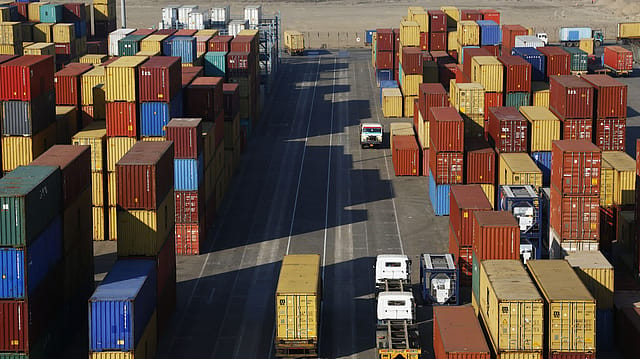WTO slashes global trade growth forecast to 1% for 2023
ADVERTISEMENT

World trade is expected to lose momentum in the second half of 2022 and remain subdued in 2023 as multiple shocks weigh on the global economy, according to the World Trade Organization (WTO).
WTO economists now predict global merchandise trade volumes will grow by 3.5% in 2022—slightly better than the 3.0% forecast in April. For 2023, however, they foresee a 1.0% increase—down sharply from the previous estimate of 3.4%.
Import demand is expected to soften as growth slows in major economies for different reasons, the trade body says. In Europe, high energy prices stemming from the Russia-Ukraine war will squeeze household spending and raise manufacturing costs. In the United States, monetary policy tightening will hit interest-sensitive spending in areas such as housing, motor vehicles and fixed investment. China continues to grapple with Covid-19 outbreaks and production disruptions paired with weak external demand.
Growing import bills for fuels, food and fertilisers could lead to food insecurity and debt distress in developing countries, the WTO adds.
"Policymakers are confronted with unenviable choices as they try to find an optimal balance among tackling inflation, maintaining full employment, and advancing important policy goals such as transitioning to clean energy," says WTO director-general Ngozi Okonjo-Iweala.
January 2026
Netflix, which has been in India for a decade, has successfully struck a balance between high-class premium content and pricing that attracts a range of customers. Find out how the U.S. streaming giant evolved in India, plus an exclusive interview with CEO Ted Sarandos. Also read about the Best Investments for 2026, and how rising growth and easing inflation will come in handy for finance minister Nirmala Sitharaman as she prepares Budget 2026.
"While trade restrictions may be a tempting response to the supply vulnerabilities that have been exposed by the shocks of the past two years, a retrenchment of global supply chains would only deepen inflationary pressures, leading to slower economic growth and reduced living standards over time," she adds.
The new WTO forecast estimates world GDP at market exchange rates will grow by 2.8% in 2022 and 2.3% in 2023 — the latter is 1.0 percentage points lower than what was previously projected.
Food prices in US dollar terms have also risen sharply due to the fact that the Russian Federation and Ukraine are both major suppliers of grains and fertilisers, the World Trade Organization says, adding that this raises food security concerns in many countries, particularly low-income ones that tend to spend a large fraction of household income on food.
Many currencies have also fallen against the dollar in recent months, making food and fuels even more expensive in national currency terms, the WTO says.
Last week, the United Nations Conference on Trade and Development (UNCTAD) said the Indian economy may grow 5.7% in 2022 and the growth will slow down by one percentage point to 4.7% in 2023.
"India’s economic activity is being hampered by higher financing costs and weaker public expenditures, resulting in a deceleration in GDP growth to 5.7% in 2022. Going forward, the government has announced plans to increase capital expenditure, especially in the rail and road sector, but in a weakening global economy, policymakers will be under pressure to reduce fiscal imbalances, and this may lead to falling expenditures elsewhere," UNCATD's annual Trade and Development Report 2022 states.
